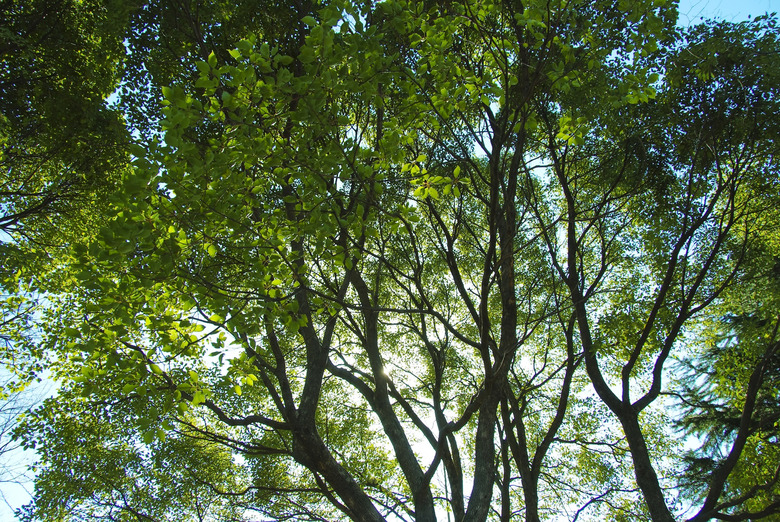Why Do Plants Need Photosynthesis & Cellular Respiration?
Plants and animals work together in that animals consume oxygen and exhale carbon dioxide while plants do the opposite. But in reality, it's not that simple. Believe it or not, plants need oxygen for the very same reason animals do. It's needed for a process called cellular respiration. So while animals perform cellular respiration to survive, plants are performing both photosynthesis and cellular respiration. Why do plants need both photosynthesis and cellular respiration?
What Is Cellular Respiration?
What Is Cellular Respiration?
Photosynthesis and cellular respiration are two very important chemical processes in biology. Cellular respiration is why animals need to breathe oxygen. Cellular respiration is a series of metabolic processes that take place within a cell, in which oxygen and food molecules are converted into energy that the cell can use.
A constant supply of oxygen to cellular organelles called mitochondria allows those organelles to convert molecules from food into energy-storing molecules called adenosine triphosphate (ATP). That ATP is then used to power all the parts of the cell. Because your whole body needs energy all the time, you can't live without cellular respiration.
The molecules that go into cellular respiration come from food. They are sugars, fats and proteins, all molecules that are big and contain a lot of energy. This means that animals are heterotrophs, or organisms that eat other organisms for energy.
Why Do Plants Do Photosynthesis?
Why Do Plants Do Photosynthesis?
Most plants don't eat other organisms. Instead, their food supply comes entirely from within. Because plants produce their own food, they are called autotrophs. This literally means "self-eating." It's gross, but it is accurate.
Plants survive by capturing energy from sunlight in a process called photosynthesis. Photosynthesis happens in the chloroplast, which is an organelle found in plant cells, specifically the cells that make up the interior of the leaf and some of the stem.
Chloroplasts house a pigment called chlorophyll, the pigment that causes leaves to appear green. Essentially, any part of a plant that is green is made up of cells that contain chloroplasts. The chloroplasts' job is to capture sunlight for the process of photosynthesis.
Once solar energy is captured, photosynthesis uses that captured solar energy to power a chemical process that takes carbon dioxide and builds sugars out of it. That sugar is the main food source that powers the plant.
Do Plants Undergo Cellular Respiration Too?
Do Plants Undergo Cellular Respiration Too?
Do plants do cellular respiration? Of course! In fact, plants perform cellular respiration all the time. Just like animals can't live without cellular respiration, plants can't live without cellular respiration, either. Photosynthesis and respiration in plants are complementary processes because photosynthesis is only one half of the process of getting energy for a plant. It's how they make food, not how they consume it.
Cellular respiration happens in organelles called mitochondria, in plants as well as animals. It is a process that takes in oxygen and molecules from food (sugar from photosynthesis), and transforms them into useable energy for the cell.
Alongside the photosynthesizing chloroplasts, plants also have oxygen-consuming mitochondria eating the food that is made through photosynthesis. Without cellular respiration in plants, photosynthesis would be pointless.
Living Without Leaves
Living Without Leaves
Plants can actually live longer without photosynthesis than they can without respiration. Some plants survive half the year without performing photosynthesis, but if they stop performing cellular respiration, even for a minute, they would be dead where they stand.
A good example of this are deciduous trees, or trees that lose their leaves in the winter. They spend all spring and summer using their chloroplasts to make food. Photosynthesis in their leaves allows them to make more food than they need, which they will often safely store in their roots below ground.
In autumn, when the leaves fall, the tree doesn't go dormant. Instead, it is just as alive as ever. The tree is simply performing cellular respiration to survive like the rest of us, and will resume photosynthesis when spring returns and new leaves begin to grow.
Cite This Article
MLA
Brennan, John. "Why Do Plants Need Photosynthesis & Cellular Respiration?" sciencing.com, https://www.sciencing.com/why-do-plants-need-photosynthesis-cellular-respiration-13427974/. 30 September 2021.
APA
Brennan, John. (2021, September 30). Why Do Plants Need Photosynthesis & Cellular Respiration?. sciencing.com. Retrieved from https://www.sciencing.com/why-do-plants-need-photosynthesis-cellular-respiration-13427974/
Chicago
Brennan, John. Why Do Plants Need Photosynthesis & Cellular Respiration? last modified March 24, 2022. https://www.sciencing.com/why-do-plants-need-photosynthesis-cellular-respiration-13427974/
